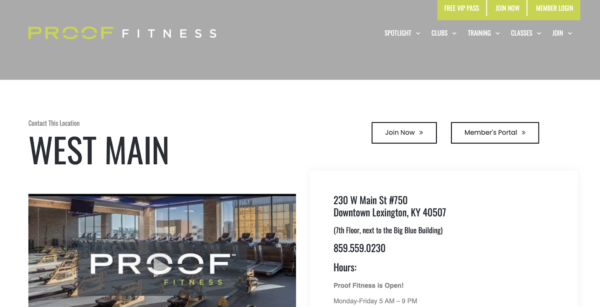
The small business owners I work with frequently make an all-too-common mistake when it comes to marketing — something that they can avoid with the simple exercise of brainstorming a customer avatar.
I’ll ask them to describe the customers they envision for their business, and they’ll answer enthusiastically, “Everybody!”
Sure, we all want every single person in the world to frantically search out what we have to offer, but it doesn’t take long to recognize that’s not in any way realistic. Consider:
- Would you even be able to handle it if every person wanted your product or service?
- Imagine the expense it would take to market to everyone in the world — do you have that kind of budget?
- How would you be able to tell if you’re meeting the needs of your customers if those needs are so varied?
The fact is, trying to market your business to every individual is not only impossible but it’s also exhausting and expensive. That’s why I encourage everyone with a small- or medium-sized business to spend the time to learn how to create a customer avatar. Also known as a buyer persona, this concept is an in-depth understanding of the ideal person to target with your marketing.
Benefits of a customer avatar
There are plenty of reasons to go through the process of creating a customer avatar for your business. It helps you to know who your audience is and what they will prefer while avoiding issues that come with trying to please everyone.
Identifying your target audience
Everything you do in business should be done with your customers in mind, but you won’t get very far if you don’t know what those customers are like. Focusing on the people with whom you can truly connect — your target audience — will make it more likely that you grow your business.

Helping you personalize your message
Marketing works best when it’s directed squarely at the person who’s receiving it, and the way to do that is through the art of personalization. The key to matching your message to your customer is to collect data, form an in-depth understanding of the pain points of your customers, and offer useful solutions.
Allowing you to steer clear of problems
If you open up your business to every person, you’ll inevitably get off track. Think of well-meaning clients who request totally different services or products than what’s in your business plan. You risk changing your entire concept just to appease someone who may not even be a good fit for what you have to offer. Focusing on a customer avatar keeps your eye on the prize.
How to create a customer avatar
Gather your business partners or trusted members of your team and block off some time for a brainstorming session. Creating a buyer persona isn’t easy — and that’s why so few business owners take the time to do it. The key to this process is the details. Avoid anything vague as you work through the following steps.
1. Create a name and physical description
Begin by thinking of a loyal customer, someone who champions your products or services and would be quick to post a stellar online review. What is a natural name for this person? What does he or she look like? Get specific and write it down. If someone on your team is artistically inclined, you can even draw this person.
2. Zero in on demographic details
You’ll want to create the most well-rounded vision possible for your customer avatar. Determine demographics such as:
- Age
- Income level
- Amount in savings
- Specific geographic location
- Their job
- Homeownership status, including a detailed idea of what their home is like and its value
- Marital status
- Parental status
- Pet ownership
- Educational status, including where they went to school and if they were a good student

3. Flesh out their humanity
Numbers and data are important, but you’re not looking to create a robot as a customer avatar. The emotional elements of a personality are usually what make people decide where they spend their money. Figure out:
- Their pain points, and not just in relation to your business
- Their personality characteristics
- Their greatest fears
- Their heartfelt desires
- A list of specific media they consume, including books, movies, and websites
- The celebrities who inspire them
By the end of the exercise, everyone in the room should feel like they’re friends with your customer avatar. They should be so connected with this imaginary person that they’re inspired to work just for them.
3 things to avoid when creating a buyer persona
Feeling good about the process? Ensure success by avoiding common mistakes.
1. Don’t be vague
Don’t get lazy just because it’s hard to create an avatar. It’s too easy to decide that, like everyone else on the planet, your ideal customer likes to scroll social media. Dig deeper. Are they on Instagram? What hashtags do they follow? To what types of accounts do they subscribe? How many minutes a day are they using the service?

2. Don’t ignore your own data
Part of what makes a customer avatar come to life is that you can support the brand persona using real-life data that you’ve collected. Look back on any surveys, interviews, or back-end details from marketing campaigns. Determine the real people who love and support your work and translate that knowledge into an avatar that can help you expand your marketing to more people just like them.
3. Don’t do it by yourself
Even if you know your company, services, products, and vision better than anyone else, don’t try to create an avatar alone. You may be surprised by the blind spots and prejudices you have that have stopped you from reaching an ideal audience. Be open-minded during this creative process, and take in the suggestions from your team.
Tips for using a customer avatar to guide your marketing
Once you’ve done this tough brainstorming process, you can use it to guide all your outreach efforts. You should always feel confident that this specific avatar can relate to and appreciate every message you share, be it through an advertisement campaign, direct email marketing, or social media.
Use this persona to know where to find your target audience, too. You can use what you’ve created to determine what your future customers are looking for and why they would want to choose your business. And perhaps most importantly, you’ll be able to best understand what you can do to help them.
Start with one, then expand if needed
Some businesses have a number of niche products or services that require totally different marketing campaigns. If this is the case for your business, it’s OK to go through the process more than once to create more than one customer avatar. Don’t let a complex business plan stop you from beginning this important work.
To start, block out time. For many leaders who are already stretched thin, this can be the hardest part! Plan for anywhere from two hours to the entire afternoon for the meeting. If you feel rushed, you’ll be more likely to stay superficial in the brainstorming process.
Remember, the magic is in the details, which you can then use to create a finely pointed target for all your marketing efforts.




